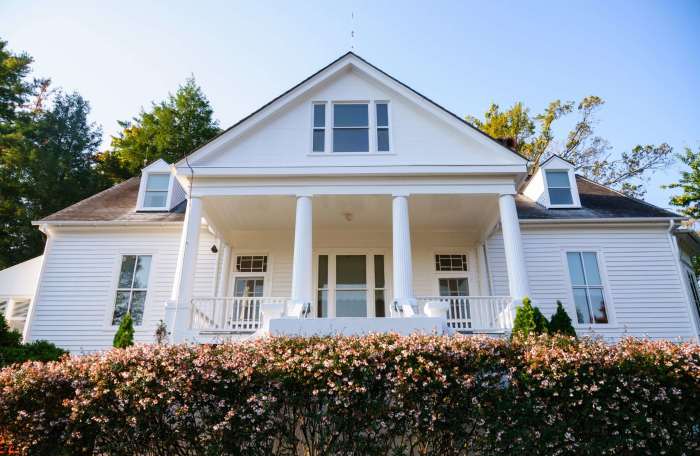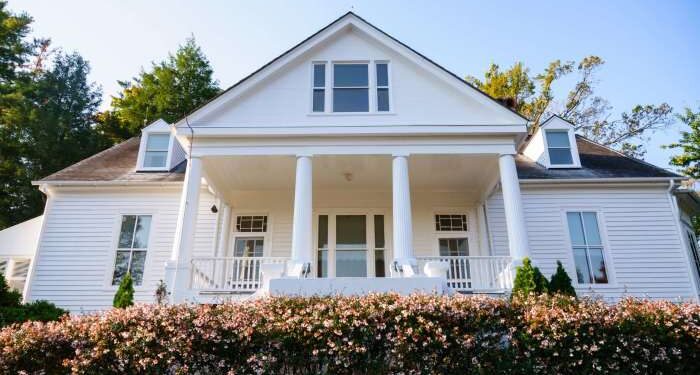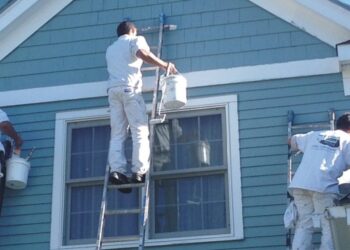Embark on a journey through time with historic home restoration specialists, whose expertise lies in preserving the past to ensure a vibrant future. This captivating topic delves into the intricate world of restoring old homes, highlighting the significance of their preservation and the unique challenges faced by specialists in this field.
Introduction to Historic Home Restoration Specialists
Historic home restoration specialists play a crucial role in preserving and restoring buildings that hold significant historical value. These professionals are skilled in reviving old structures to their former glory while maintaining their original architectural integrity.
Importance of Preserving and Restoring Historic Homes
- Historic homes are tangible links to the past, providing insight into the architectural styles, craftsmanship, and lifestyles of bygone eras.
- Preserving these structures helps maintain the cultural heritage of a community, fostering a sense of pride and identity among its residents.
- Restoring historic homes can increase property values and attract tourism, contributing to the economic development of the area.
Expertise Required to Work as a Historic Home Restoration Specialist
- Extensive knowledge of historical architectural styles, materials, and construction techniques.
- Skills in conservation and preservation methods to ensure the longevity of restored structures.
- Experience working with historical building codes and regulations to comply with preservation standards.
Historical Significance of Restoring Old Homes

Preserving and restoring old homes is not just about maintaining the physical structure; it is also about safeguarding a piece of history for future generations to appreciate and learn from. These historic properties offer a glimpse into the past, showcasing architectural styles, craftsmanship, and stories of the people who once lived there.
Examples of Famous Historic Homes Successfully Restored
- The White House: The iconic residence of the President of the United States has undergone numerous restoration projects to preserve its historical integrity.
- Versailles Palace: This grand palace in France has been meticulously restored to its former glory, showcasing the opulence of the French monarchy.
- The Alhambra: This stunning Moorish palace in Spain has been carefully restored to highlight its intricate Islamic architecture and design.
Challenges and Considerations in Working on Historical Properties
When working on historical properties, restoration specialists face a unique set of challenges and considerations due to the age and significance of the buildings.
- Historical Accuracy: It is crucial to research and ensure that any restoration work is historically accurate, maintaining the original design and materials as much as possible.
- Preservation vs. Modernization: Balancing the need to preserve the historical integrity of the property with modern amenities and functionality can be a delicate process.
- Regulatory Compliance: Dealing with local regulations, permits, and restrictions when working on historical properties adds an extra layer of complexity to the restoration process.
- Cost and Time Constraints: Restoration projects on historical homes often require meticulous attention to detail and can be time-consuming and costly, requiring careful planning and budgeting.
Restoration Techniques and Methods
Restoration specialists utilize a variety of techniques to bring historic homes back to their former glory. These methods are crucial in preserving the original beauty and integrity of these architectural treasures.
Common Restoration Techniques
- Repairs and Replication: Specialists often repair existing features and replicate missing or damaged elements to match the original design of the home.
- Cleaning and Conservation: Cleaning techniques are employed to remove dirt, grime, and layers of paint without damaging the historical materials. Conservation methods help protect and stabilize fragile components.
- Structural Stabilization: Addressing structural issues is essential in ensuring the stability and longevity of the historic home. Specialists use techniques such as reinforcement, underpinning, and shoring to stabilize the building.
- Historically Accurate Finishes: Restorers carefully select finishes and materials that match the time period of the home, ensuring authenticity in the restoration process.
Process of Restoring a Historic Home
Restoring a historic home is a meticulous process that involves several steps from start to finish. Specialists follow a systematic approach to ensure the preservation of the home's historical significance.
- Assessment: The first step involves a thorough assessment of the home to identify areas that require restoration and develop a restoration plan.
- Documentation: Detailed documentation of the home's original features and materials is crucial for reference during the restoration process.
- Planning: Specialists create a restoration plan outlining the timeline, budget, and specific techniques to be used in the restoration project.
- Execution: Restoration work begins, including repairs, cleaning, structural stabilization, and the application of historically accurate finishes.
- Quality Control: Regular inspections and quality control measures are implemented to ensure that the restoration is carried out according to plan and meets preservation standards.
- Completion: Once the restoration is complete, the historic home is ready to be enjoyed and appreciated for generations to come.
Challenges Faced by Specialists
Restoring historic homes comes with its own set of challenges, including structural damage and outdated materials that require careful navigation by specialists.
- Structural Damage: Specialists must address structural issues such as foundation problems, rotting wood, and deteriorating masonry to ensure the stability of the home.
- Outdated Materials: Dealing with outdated materials like lead paint, asbestos, or obsolete building techniques requires expertise to safely remove or replace them while preserving the historical integrity of the home.
- Regulatory Compliance: Specialists must adhere to strict regulations and guidelines for historic preservation to ensure that the restoration meets preservation standards and retains the home's historical significance.
Preservation of Architectural Features
Preserving original architectural features is crucial in maintaining the historical integrity and character of a home. These features tell a story of the past and contribute to the unique charm of the property. Specialists play a vital role in ensuring these elements are protected and enhanced during the restoration process.
Importance of Preservation
Preserving architectural features not only honors the craftsmanship of the past but also adds value to the property. Original details such as moldings, fireplaces, windows, and doors are irreplaceable and contribute to the overall aesthetic appeal of the home. Retaining these elements can also increase the property's market value and appeal to potential buyers who appreciate historical significance.
Tips for Retaining Historical Integrity
- Document and photograph all existing architectural features before starting any restoration work to ensure they are accurately preserved.
- Use traditional materials and techniques whenever possible to maintain the authenticity of the home's original design.
- Consult with historical preservation experts to ensure compliance with regulations and guidelines for maintaining historical properties.
- Consider reversible modifications that allow for future restoration efforts without damaging the original features.
Innovative Preservation Approaches
- 3D scanning technology can be used to create virtual models of architectural details for reference during restoration projects.
- Replicating missing or damaged features using 3D printing techniques can help preserve the original look of the home.
- Utilizing salvaged materials from other historical properties can provide authentic replacements for deteriorated architectural elements.
Outcome Summary
In conclusion, the art of historic home restoration specialists is a delicate dance between honoring the past and embracing the future. With a keen eye for detail and a deep appreciation for architectural history, these experts continue to breathe life into our heritage, one restoration project at a time.
FAQ Resource
What qualifications are needed to become a historic home restoration specialist?
To become a specialist, one typically needs a background in architecture, historic preservation, or a related field, along with hands-on experience in restoration projects.
How long does it usually take to restore a historic home?
The time frame for restoration varies depending on the size and condition of the home, but it can range from several months to a few years.
What are some common challenges faced by historic home restoration specialists?
Specialists often encounter issues such as structural damage, sourcing authentic materials, and navigating strict preservation guidelines.











